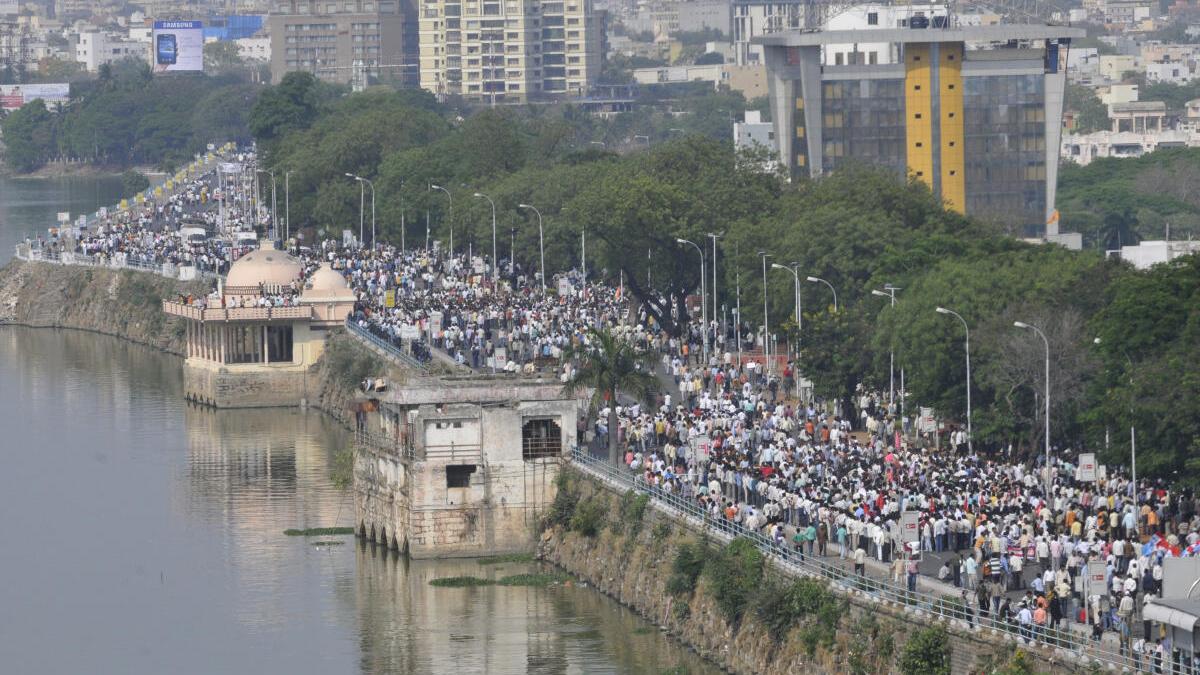
Watch: 10 years of Telangana: Remembering the Million March that created a new State
The Hindu
Serish Nanisetti recalls the events of March 10, 2011 when the Million March was held in Hyderabad, which eventually led to the formation of Telangana State three years later
June 2 marks a decade of formation of the separate Telangana state. A state that was carved out of the erstwhile Andhra Pradesh with Hyderabad as its capital. The formation of the state was the result of near seven decade struggle for a separate state.
March 10, 2011 was a Thursday when the Million March announced by Telangana Joint Action Committee was to take place on the Tank Bund.
The Andhra Pradesh police threw a security dragnet on the Tank Bund and the Osmania University campus. But the outcome was something else. CPI-ML (New Democracy) leaders and students entered the promenade through unguarded of the Tank Bund where they assembled in the guise of marriage ceremony in Ambedkar Bhavan. The Osmania University students broke through the gates to reach the Tank Bund. The mass of people destroyed some of the statues that were installed during the time of Chief Minister N.T. Rama Rao.
That moment of iconoclasm changed the trajectory of the separate Telangana movement. And the state was formed within three years. Now, the skyline of the area has changed. The granite statue of Buddha is dwarfed by the brass statue of Ambedkar. The state Secretariat with 78,000 square metre office space has replaced the older building. There is a new Martyrs’ Memorial which looks like a flaming lamp.
This transformed skyline is reflective of the new Telangana which is at war with its own history. How the past is written by the present government holds the key how the future of Telangana is shaped over the next few decades.
Presentation: Serish Nanisetti
Video: Nagara Gopal

“Writing, in general, is a very solitary process,” says Yauvanika Chopra, Associate Director at The New India Foundation (NIF), which, earlier this year, announced the 12th edition of its NIF Book Fellowships for research and scholarship about Indian history after Independence. While authors, in general, are built for it, it can still get very lonely, says Chopra, pointing out that the fellowship’s community support is as valuable as the monetary benefits it offers. “There is a solid community of NIF fellows, trustees, language experts, jury members, all of whom are incredibly competent,” she says. “They really help make authors feel supported from manuscript to publication, so you never feel like you’re struggling through isolation.”

Several principals of government and private schools in Delhi on Tuesday said the Directorate of Education (DoE) circular from a day earlier, directing schools to conduct classes in ‘hybrid’ mode, had caused confusion regarding day-to-day operations as they did not know how many students would return to school from Wednesday and how would teachers instruct in two modes — online and in person — at once. The DoE circular on Monday had also stated that the option to “exercise online mode of education, wherever available, shall vest with the students and their guardians”. Several schoolteachers also expressed confusion regarding the DoE order. A government schoolteacher said he was unsure of how to cope with the resumption of physical classes, given that the order directing government offices to ensure that 50% of the employees work from home is still in place. On Monday, the Commission for Air Quality Management in the National Capital Region and Adjoining Areas (CAQM) had, on the orders of the Supreme Court, directed schools in Delhi-NCR to shift classes to the hybrid mode, following which the DoE had issued the circular. The court had urged the Centre’s pollution watchdog to consider restarting physical classes due to many students missing out on the mid-day meals and lacking the necessary means to attend classes online. The CAQM had, on November 20, asked schools in Delhi-NCR to shift to the online mode of teaching.









